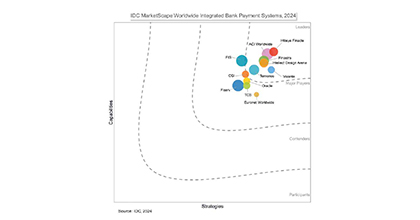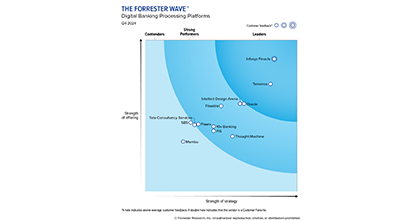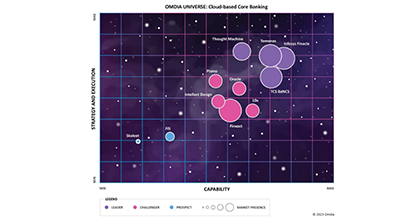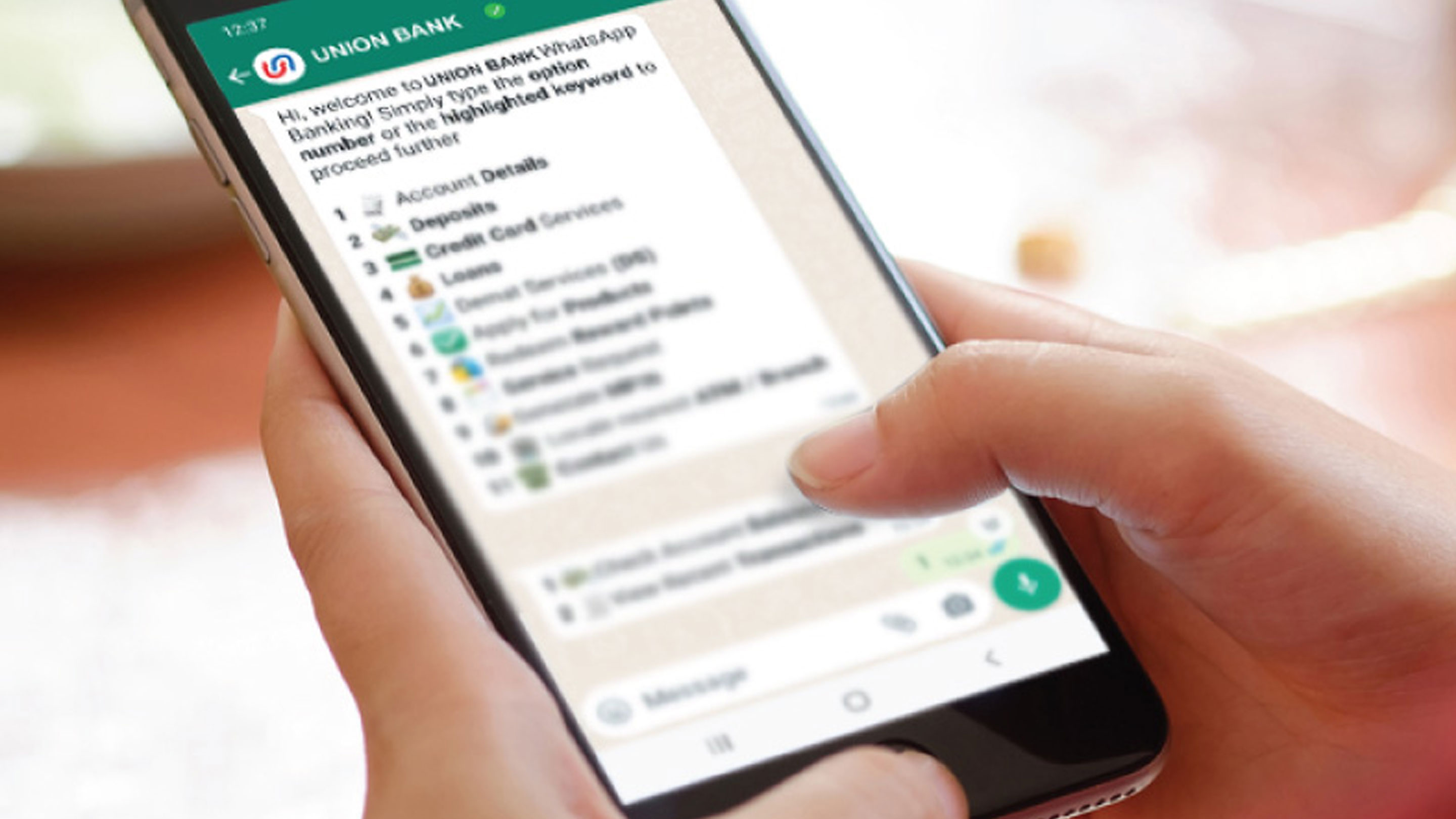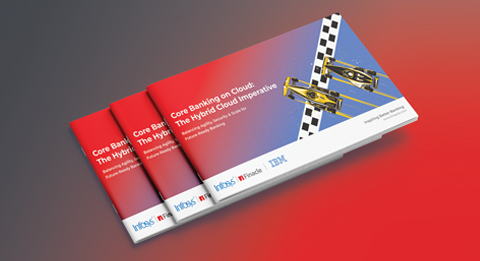-
![]() Quantum Computing: As the Future Awaits, The Strides Are DefinitiveQuantum computing is no longer confined to theory or the edges of experimental science - it is rapidly advancing toward practical impact.Read More
Quantum Computing: As the Future Awaits, The Strides Are DefinitiveQuantum computing is no longer confined to theory or the edges of experimental science - it is rapidly advancing toward practical impact.Read More -
![IDC IDC]() IDC MarketScape: Worldwide Integrated Bank PaymentFinacle Payments is an enterprise payments services system that manages end-to-end payments across instrument types, payment schemes, transaction types, customeRead More
IDC MarketScape: Worldwide Integrated Bank PaymentFinacle Payments is an enterprise payments services system that manages end-to-end payments across instrument types, payment schemes, transaction types, customeRead More -
![]() Supply Chain FinanceToday, as businesses seek to make their ecosystems more resilient, Supply Chain Finance (SCF) has emerged as a powerful lever for banks and financial institutions to support clients, while unlocking new revenue streams.Read More
Supply Chain FinanceToday, as businesses seek to make their ecosystems more resilient, Supply Chain Finance (SCF) has emerged as a powerful lever for banks and financial institutions to support clients, while unlocking new revenue streams.Read More
-
![]() The Future of Core Banking: Business and Technology EvolutionOur point of view paper, “The Future of Core Banking: Business and Technology Evolution”, serves as a candid and forward-looking benchmark of your institution’s readiness—and a strategic playbook for core modernization.Read More
The Future of Core Banking: Business and Technology EvolutionOur point of view paper, “The Future of Core Banking: Business and Technology Evolution”, serves as a candid and forward-looking benchmark of your institution’s readiness—and a strategic playbook for core modernization.Read More -
![The Forrester Wave The Forrester Wave]() Forrester Wave Digital Banking, Q4 2024Finacle is best suited for large retail, SMB, and corporate banks who seek a modern, comprehensive, innovative platform with superior support.Read More
Forrester Wave Digital Banking, Q4 2024Finacle is best suited for large retail, SMB, and corporate banks who seek a modern, comprehensive, innovative platform with superior support.Read More -
![]() Driving Comprehensive Revenue ManagementDiscover why revenue management must evolve into a comprehensive, strategic capability. Decode a blueprint to overcome challenges and unlock sustainable monetization.Read More
Driving Comprehensive Revenue ManagementDiscover why revenue management must evolve into a comprehensive, strategic capability. Decode a blueprint to overcome challenges and unlock sustainable monetization.Read More
-
![]() Shaping Banking’s Next: Banking Technology Trends for 2025 and BeyondThe banking industry has been balancing disruption and opportunity for several years now, and the pace of change shows no signs of slowing as we move into 2025 and beyond.Read More
Shaping Banking’s Next: Banking Technology Trends for 2025 and BeyondThe banking industry has been balancing disruption and opportunity for several years now, and the pace of change shows no signs of slowing as we move into 2025 and beyond.Read More -
![]() Virtual Accounts 2.0: Surpass Conventional Cash Management and Unlock Next-Gen PossibilitiesVirtual Account Management was a groundbreaking shift in the banking landscape, revolutionising use cases like cash concentration, pooling, centralised treasury management, and in-house banking (POBO, ROBO, COBO)Read More
Virtual Accounts 2.0: Surpass Conventional Cash Management and Unlock Next-Gen PossibilitiesVirtual Account Management was a groundbreaking shift in the banking landscape, revolutionising use cases like cash concentration, pooling, centralised treasury management, and in-house banking (POBO, ROBO, COBO)Read More -
![]() Unlocking Hybrid CloudAs banks push forward with their digital transformation agenda, cloud serves as a pivotal enabler. Each bank, at varying stages of adoption, crafts its unique path, dictated by context, regulations, and risk appetite.Read More
Unlocking Hybrid CloudAs banks push forward with their digital transformation agenda, cloud serves as a pivotal enabler. Each bank, at varying stages of adoption, crafts its unique path, dictated by context, regulations, and risk appetite.Read More
-
![]() Banking on CloudThis report from Infosys Finacle delves into the need for accelerating cloud adoption, highlights the current state of the industry, and puts forth key recommenRead More
Banking on CloudThis report from Infosys Finacle delves into the need for accelerating cloud adoption, highlights the current state of the industry, and puts forth key recommenRead More -
![]() Omdia Universe | Cloud-based Core BankingIn the report, Omdia highlights the following key capabilities of leading cloud-based core banking providers:Read more
Omdia Universe | Cloud-based Core BankingIn the report, Omdia highlights the following key capabilities of leading cloud-based core banking providers:Read more
-
![]() Emirates NBDEmirates NBD consolidates its operations on a single version for scalability, agility, and standardization.Read More
Emirates NBDEmirates NBD consolidates its operations on a single version for scalability, agility, and standardization.Read More -
![]() A Global Top 5 BankDiscover how a global top 5 bank headquartered in the US accelerated payments transformation.Read More
A Global Top 5 BankDiscover how a global top 5 bank headquartered in the US accelerated payments transformation.Read More -
![]() Union Bank of IndiaUnion Bank of India launches Union Virtual Connect (UVConn) by leveraging WhatsApp to provide customers personalized banking services.Read More
Union Bank of IndiaUnion Bank of India launches Union Virtual Connect (UVConn) by leveraging WhatsApp to provide customers personalized banking services.Read More

Are Your Debt Collection Systems Up-To-Date?
Blogs
April 9, 2019
Elevating levels of debt magnify the chances of delinquency, which can considerably reduce profit margins and surge costs for lenders.
Furthermore, since lofty debt levels render the economy to extreme vulnerability, inability to check this stalemate in time can also give way to a global economic meltdown.
Thus, with the amount of global debt accumulating every year, traditional processes have been able to do very little to arrest the problem, creating the need for advanced systems that can inhibit galloping delinquency rates by also enhancing customer experience.
Problems in Traditional Collection Process
In 2017, the global debt reached an all-time high of $184 trillion in nominal terms, the equivalent of 225% of GDP. On average, the world’s debt exceeded $86,000 in per capita terms, which is more than 2½ times the average income per-capita.1
To recover loans, traditional systems deploy time-intensive manual correspondences that impede proper resource utilization. Also, they only analyze recent internal transaction data and lack accurate risk segmentation models. Regular updates of data since collection or loan approval are also not available with these traditional systems.
The use of AI and machine learning (ML) has become obligatory for businesses to beef up collections and skirt the initial roadblocks presented by legacy systems.
AI Improving Performance Records
When it comes to collection strategy, AI-powered machines emulate cognitive human behavior to solve a host of issues discussed below:
- Auto-generated notifications: Automated notifications can be used to send payment notifications via SMS and e-mails that carry UPI payment options and offer the option of using debit or credit cards. Based on the best mode of communication that these intelligent machines prompt, automated notifications can also be customized. Consumer base expansion is the direct result of this. Simplifying the entire process, ML-based applications also analyze existing debtor profiles, predict the best channel and time of contacting them and schedule the type of content best suited for a response.
- Digitized collection strategies: AI and analytics can recognize and score delinquencies based on data such as due amount, percentage outstanding and credit limit, behavioural and sentiment analysis, thus offering a more robust customer bifurcation. So, drawing up personalized collection strategies for each debtor or debtor cluster becomes convenient.
- Identifying potential defaulters: These insights help banks identify potential instances of default and initiate action. ML and natural language processing (NLP) technologies can be used to predict customers that might be in dire financial situations and can be offered credit counseling. These offers cement customer loyalty and enhance customer experience. The modern collection system also streamlines grievance redressal processes, further bringing customer goodwill to the fore.
- Determining costs and cash influx: Leveraging ML and analytics will help banks to determine the cost of defaults and their consequential recovery strategy. With this, costs will drop while the turnaround times will improve. In addition, AI technologies can be used to evaluate the percentage of recovery, timeliness, the process used and cash inflow.
Powered by advanced ML capabilities, CollectEdge is a data-driven intelligent application designed to help lending and collecting organizations reduce delinquency rates and boost recoveries. CollectEdge can assist companies that want to make existing debt collection systems more intelligent and seek a balance between mitigating loan losses and enhancing customer experience.
Collectedge
CollectEdge studies data across channels and looks up statutory/regional regulations to recommend appropriate channels and time for contact. It understands personality traits, negotiates and connects with borrowers based on e-mails, texts, public posts, blogs, tweets and comments. In addition, it offers preventive insights, risk predictions and ML-based queue prioritizations that focus on profiles with high chances of recovery and personalized repayment plans for delinquent customers.
Apart from major perks like lower delinquency rates, reduced charge-offs and higher operational efficiencies, the software offers a unified view of customer accounts and can be synced with existing core collection systems. With CollectEdge, companies are not required to rip and replace their existing legacy systems and train their talent resources on new technology. Easy implementation and faster time-to-market, unbiased data model and easy access for audit teams are factors that can make the product popular among companies concerned about value cycles and understandability among auditors.
Sources:
New Data on Global Debt, https://blogs.imf.org/2019/01/02/new-data-on-global-debt/, January 2, 2019



©2025 -Edgeverve Systems Limited | All rights reserved

